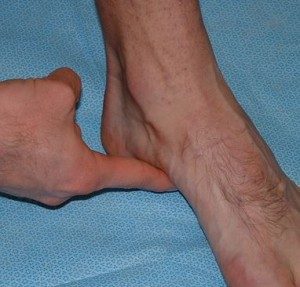Podiatry (or what was in the past known as ‘chiropody’) felt is a commonly used padding material to take care of numerous difficulties in the foot. The podiatry felt is a natural product which is semi-compressed into the padding with a self-adhesive backing. The felt padding comes in flat sheets which could be then be trimmed to any contour using scissors or it is packaged in a variety of shapes as pre-cut pads a variety of types of foot issues as well as various positions on the foot. The protective sheet across the adhesive padding is taken off and the felt pad is adhered to the foot to protect almost any painful area to provide that area a rest to ensure the pain might be reduced and the condition given a chance to heal up.
For bunions a large pad in the shape of a doughnut can be cut and stuck across the bunion to get shoe force away from the painful hallux valgus. When there is a corn on the toe, then a small pad might be trimmed to sit just behind the painful corn so that the shoe pushes over the adhesive felt pad and not upon the painful corn. That will decrease the symptoms and let the inflammation to settle down. Problems beneath the ball of the foot may well be handled using a adhesive felt pad that covers the ball of the foot and a hole is cut in the adhesive pad in the location where the painful place is. These are simply some situations of how the felt pad could be employed to treat foot problems.
It can be important to bevel the edges of the adhesive felt pad with pair of scissors as it will remain on the foot longer. You normally have to be sure the skin is thoroughly clean before taking off the backing of the adhesive and attaching the adhesive felt on the foot. Don’t make the error of using a foot cream before using the adhesive felt pad. It is really not going to adhere after doing this. After the adhesive felt padding is in place and guarding the painful place, then it’s usually a good option to apply piece or pieces of adhesive strapping to help retain the felt pad in position which will help prevent the sides of the pad becoming caught up in the socks whenever using them. It is crucial that the felt padding doesn’t get wet and kept dry if possible. When it is, then the podiatry felt is usually kept in place for at the very least a couple of days. Usually, the podiatry adhesive felt padding will have to be swapped out every couple of days. These replacements using the podiatry felt padding can be done as long as is necessary for the problem to get enough protection to get some relief.
This podiatry felt is an effective short-term strategy for a variety of foot disorders. It is usually not absolutely the most suitable choice during the longer term. If you believe as though you’ll need something similar to this sort of padding in the long term after a short-term trial, then go over the long run solutions with a podiatric physician.
